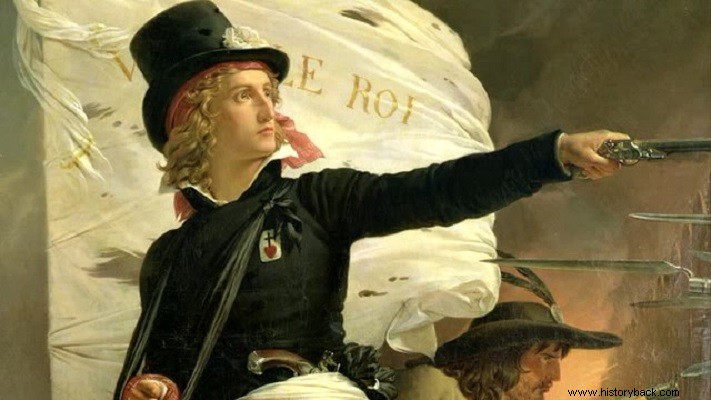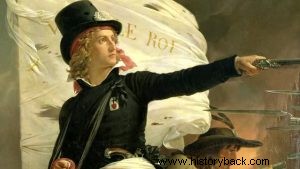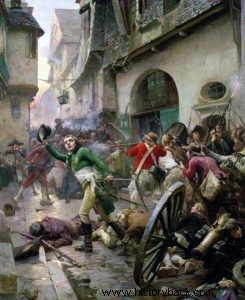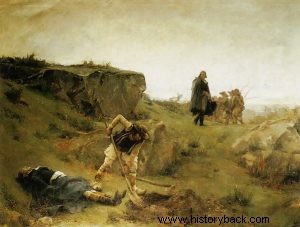
Henri de Vergier Count of Rochejaquelein was one of the noblest figures of the struggle during the French Revolution in France. He was born in 1772 and at the age of only 15 enlisted in the Royal Polish Regiment of the French royal army.
In February 1789, shortly before the outbreak of the revolution, he was serving in the Hunting Regiment of Flanders. He stood in favor of the king and in March 1792 he was a member of the Constitutional Guard of King Louis XVI which formed the bodyguard of the French, now constitutional, monarch.
The revolution had forced the king to leave Versailles and live in the Tuileries palace. On August 10, 1792, however, the revolutionary forces attacked the palace. de Vergier was present and fought heroically in the battle.
However, the 20,000 rebels overcame the King's approximately 1,200 men and massacred Louis' Swiss Guard. A total of 600 royalists were killed and another 200 captured. De Vergier managed to escape and returned to his birthplace and then to the estates of his also royalist cousin de Lesquières in Poitou, reacting to the conscription imposed by the revolution.
The reaction to conscription developed into a regular counter-revolution in the province of Vendée in western France. From April 1793 de Vergier joined the forces of royalists and fought against the revolution.
Then he gave his men the famous order:"My friends, if I attack follow, if I retreat kill me, if I die take revenge on me"...
Battles
At the head of a few thousand peasants hewon his first victory against the enemy and took part in the siege of Brusier which he captured on May 3, 1793. On May 5, 1793 the forces of Vendée achieved a great victory at Toire, destroying a division of the forces of the revolution
De Vergier fought and distinguished himself at the battle of Fontenay le Comte on 25 May and at the great battle of Saumir on 9 June. In the first battle, to encourage his men he wore three red scarves on himself so that he could be seen well by the enemies, "teaching" his men by example to ignore enemy fire.
At Saumir with a loss of 400 the Vendean men inflicted 4,500 casualties on the enemy. But they were defeated in the battle of Lucon. He undertook the reorganization of the defeated army so that it crushed the enemy at the Battle of Santonay, inflicting 5,000 casualties against his own 500.
On 13 September 1793 de Vergier was wounded but continued to fight. He also fought heroically at the Battle of Sole, on October 17, where the Vendean army was defeated, losing 8,000 men against 4,000 of its opponents.
Because of his bravery he was named commander-in-chief of the Catholic Royal Army of Vendée although he was only 21 years old. On November 12 he captured Avrance but failed to capture Granvig.
Meanwhile, Paris sent very strong forces to the area. The Vendées were defeated at Le Mans on 12 December and at Savenai on 23 December. In this battle de Vergie had only 6,000 fighting men and as many disorderly fighters.
The Vendeans fought as best they could but were crushed and the more fortunate fell in the battle. The others were captured and executed. With his few surviving men he fled to the woods and continued to fight as a guerrilla anymore. On January 28, 1794, however, he was killed during a reconnaissance.

The battle at the Tullières palace.

Di Vergier injured, but fighting.

de Vergier leads his men into battle.

Di Vergier dead.
